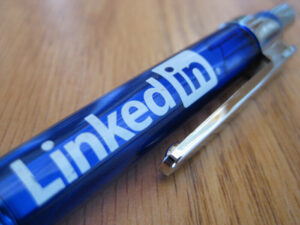
Career Corner: 5 Action Steps to Communicate Your Transferable Skills
We’ve all heard the age-old saying, “No time like the present.” Given the uncertain times, these words are feeling more relevant as days go by.

We’ve all heard the age-old saying, “No time like the present.” Given the uncertain times, these words are feeling more relevant as days go by.

If we’ve learned anything over the past decade, it is the power of a hashtag… #WorkTrends has been on quite an adventure. Over the past
For many, LinkedIn has long been the underdog in the social media space. The kid who gets picked last for sports. The red-headed step-child. When
There’s always that tipping point when the future turns into the present; novelty becomes the new normal. In tech recruiting, that’s the case with social
Each year, technology brings new recruiting trends to the HR world that impact both how we recruit, and retain, employees. It’s up to businesses to stay
I’m consistently amazed by how unaware the average job seeker is of how to establish a positive first impression on a phone interview. I hear
So, you’re hoping to create some buzz around the job ad you’ve just published on your careers page? Today’s recruiting environment is competitive and complex.
Predictions of future trends typically range from spot-on to far-fetched, and just plain silly — the latter being more likely. Take the second installment of

LinkedIn took the recruiting world by storm not too long ago. This user-friendly, massive network of talent has become an indispensable tool for hiring professionals,
LinkedIn is the champion of social networking sites when it comes to recruitment, with 94% of recruiters using the site. Are they successful in finding

On the morning of the vernal equinox, the crazy cool converged. Actually, according to my mother-in-law, the vernal equinox is equivalent to at least four

The balance of power is shifting in the employer/employee relationship. What does it mean for the future of work? The #TChat crowd weighs in

Even though LinkedIn has long been known as a recruiter and job seeker social media site, it is extremely under-utilized as a recruitment search AND marketing

Does professional networking feel like a burden? Lighten the load by planning ahead for these 5 key social scenarios

When you’re job hunting, information is power. Try these social media tips to stay a step ahead of recruiters and hiring managers.

TalentCulture is thrilled to be featured on Forbes List of “Best Websites For Your Career.” Why? In the spirit of lists everywhere, here are 3 reasons…
What’s the real value of a professional endorsement – for individuals and prospective employers? As career networking sites like LinkedIn make it easier to “endorse” others, are commendations losing their meaning? The TalentCulture community speaks up…
Online endorsements can carry a lot of weight. But LinkedIn’s recent “endorsements” feature has the #TChat crowd asking: “What is the point of diminishing returns?” Let’s discuss!
We’d thought we’d cause a rift in the space time continuum. Fortunately we didn’t. That’s because the amazing SocialHRCamp attendees in Vancouver BC and the
Written by Kirsten Taggart I’m currently in Australia taking some classes and learning what life is like in the southern hemisphere. Even more, I’m learning
Social recruiting isn’t really about technology – it’s about what you DO with the technology. Bottom line: It’s (still) all about relationships…
How to tap into young talent today…tips for hiring organizations
Social media is all the rage. But the power of social media is not in the tools. It’s in the relationships behind the tools. Here’s how employers can leverage social tools to cultivate talent communities…